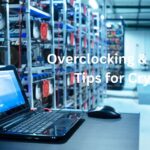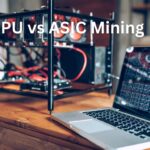Table of Contents
- 1 Can You Mine Crypto from Your Apartment?
- 1.1 Table of Contents
- 1.2 1. Electricity: Your Apartment’s Biggest Limiting Factor
- 1.3 2. Noise and Heat: The Two Hidden Killers
- 1.4 3. Is It Legal to Mine Crypto in a US Apartment?
- 1.5 4. Apartment Mining ROI – Is It Worth It in 2025?
- 1.6 5. Real-World Apartment Mining Setup (My Build)
- 1.7 6. Best Coins to Mine from Apartments in 2025
- 1.8 7. Which US States Are Best for Apartment Mining?
- 1.9 8. Tools I Recommend
- 1.10 Conclusion: Apartment Mining Is Possible – With Smart Planning
- 1.11 FAQs – Crypto Mining in a US Apartment (2025)
- 1.11.1 Can I legally mine crypto in a US apartment?
- 1.11.2 Will mining crypto from my apartment increase my electricity bill?
- 1.11.3 What is the safest GPU to use for apartment mining?
- 1.11.4 Is it profitable to mine crypto from an apartment in 2025?
- 1.11.5 Which states in the USA are best for mining from an apartment?
- 1.11.6 What are the biggest risks of apartment mining?
- 1.11.7 Can I use an ASIC miner in an apartment?
Can You Mine Crypto from Your Apartment?
As someone who has built multiple crypto mining setups over the last five years, I am constantly asked this question: “Can I mine from my apartment in the USA?”
The short answer is: Yes, but it’s not that simple.
Mining in a residential setting like an apartment has challenges like electricity limits, heat, noise, and legality. However, if you approach it smartly and strategically, apartment mining is very much possible—even profitable.
In this detailed guide, I’ll walk you through how to do apartment crypto mining the right way in 2025.
Table of Contents
1. Electricity: Your Apartment’s Biggest Limiting Factor
Apartments are not designed to run high-performance mining rigs 24/7. Most standard outlets are on a 15–20 amp circuit, supporting about 1800–2400 watts total.
Things to consider:
- A single mining rig with 1–2 GPUs uses 700W–1200W
- You should stay below 80% of your circuit load
- Use smart plugs or power meters (like Kill-A-Watt) to monitor usage
- Spread rigs across rooms if needed
Pro Tip: Avoid running rigs on extension cords. Always use surge-protected outlets and wall sockets.
2. Noise and Heat: The Two Hidden Killers
Mining rigs produce serious heat and fan noise. A typical 2-GPU rig can raise the room temperature by 5–8°F in a few hours.
Solutions I use in my apartment mining rigs:
- Choose low-power GPUs like RTX 3060 Ti or RX 6600 XT
- Use open-frame rigs with external airflow fans
- Underclock and undervolt GPUs to reduce noise
- Add exhaust fans near windows or install a small duct system
Real Talk: Your neighbor doesn’t want to hear a jet engine through the wall. Silence is golden.
3. Is It Legal to Mine Crypto in a US Apartment?
Mining is completely legal in the USA at the federal level. However, where you might face issues is with building rules, landlords, and HOAs.
Check for:
- Lease clauses that ban ‘commercial equipment’ or ‘fire hazards’
- Noise restrictions in your apartment complex
- Insurance coverage in case of fire or damage
Always inform your landlord or property manager before installing rigs. Transparency avoids future trouble.
4. Apartment Mining ROI – Is It Worth It in 2025?
Let’s look at a typical 2-GPU mining setup:
- Hardware Cost: ~$800 for 2x RTX 3060 Ti
- Hashrate: ~120 MH/s total
- Monthly Earnings: ~$60–$90 (depending on altcoin and difficulty)
- Power Cost: ~$30/month (at $0.10/kWh)
- Net Profit: ~$30–$60/month
That gives you an ROI window of 12–18 months — not bad if you scale slowly and build wisely.
Use tools like WhatToMine.com or Minerstat to estimate profits in real time.
5. Real-World Apartment Mining Setup (My Build)
- Location: California, 2-bedroom apartment
- Setup: 2x RTX 3060 Ti, HiveOS, 900W PSU, smart plug
- Noise: Whisper mode enabled on GPU BIOS
- Cooling: Two table fans + window exhaust fan
Power Bill Increase: $30/month
Average Monthly Profit: $45–$55
This setup ran for 6 months straight with zero issues. It’s doable—if you plan carefully.
6. Best Coins to Mine from Apartments in 2025
- Kaspa (KAS): Very low power, great for small rigs
- Ergo (ERG): Low heat output, decent profits
- Ethereum Classic (ETC): Still mineable, widely supported
- Nexa & Ironfish: Newer coins optimized for efficiency
Avoid BTC or high-power coins unless you have ASICs and special electrical wiring.
7. Which US States Are Best for Apartment Mining?
- Texas: Cheap power, crypto-friendly laws
- Wyoming: Mining-legal environment, low taxes
- Washington: Cheap hydro electricity (in some areas)
- Georgia: Inexpensive power and crypto-tolerant
Note: Always check your local building codes and energy rates before starting.
8. Tools I Recommend
- HiveOS or NiceHash for miner control
- Smart Plugs (TP-Link Kasa) to track power
- Kill-A-Watt meter for live wattage tracking
- Mining calculator like WhatToMine
- Exhaust fan setup or window ducting for airflow
Conclusion: Apartment Mining Is Possible – With Smart Planning
Mining crypto in your apartment isn’t a dream—it’s a reality for many in 2025. But it only works if you:
- Respect electrical limits
- Keep noise and heat under control
- Follow rental rules and laws
Start small. Stay smart. And always track your ROI. Mining may not make you rich overnight, but it can generate passive income if done right.
FAQs – Crypto Mining in a US Apartment (2025)
Can I legally mine crypto in a US apartment?
Yes, mining is legal in the USA. However, you must check your lease agreement, building policies, and local noise/fire regulations. Some landlords or HOAs may restrict high-power equipment.
Will mining crypto from my apartment increase my electricity bill?
Yes, depending on your setup. A small 2-GPU rig could raise your power bill by $25–$40 per month. Tracking your usage with smart plugs or power meters is highly recommended.
What is the safest GPU to use for apartment mining?
GPUs like RTX 3060 Ti or RX 6600 XT are known for a good performance-to-power ratio. They stay cool and are relatively quiet, making them suitable for apartments.
Is it profitable to mine crypto from an apartment in 2025?
It can be profitable if you manage heat, power, and startup costs smartly. A 2-GPU rig could earn $30–$60 per month in net profit with optimized settings.
Which states in the USA are best for mining from an apartment?
Texas, Wyoming, Georgia, and parts of Washington offer cheap electricity and crypto-friendly regulations. Always compare local energy prices and policies before starting.
What are the biggest risks of apartment mining?
Overheating, electrical overload, fire hazards, and lease violations are the main risks. Using proper ventilation, underclocking your GPU, and talking to your landlord can reduce these risks.
Can I use an ASIC miner in an apartment?
Technically, yes, but it’s not ideal. ASICs are loud and power-hungry. Unless you have a soundproofed room and upgraded electrical capacity, stick with GPU mining.







Leave a Reply